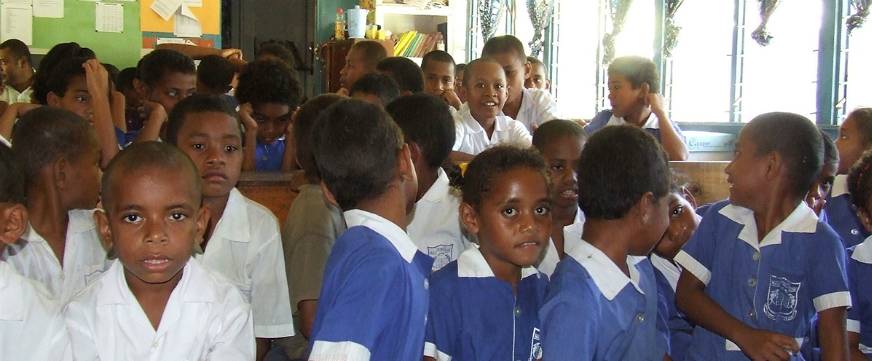
Building the evidence base for educational quality in the Pacific
Research 9 Sep 2019 3 minute readThe third cycle of the Pacific Islands Literacy and Numeracy Assessment reveals significant improvement among the region’s students, as Elizabeth Cassity reports.
The Australian Council for Educational Research (ACER) and the Pacific Community’s (SPC) Educational Quality and Assessment Program (EQAP) are working to collect evidence of education quality for governments, schools, communities and students in the region. The Pacific Islands Literacy and Numeracy Assessment (PILNA) is a key part of that effort and measures the literacy and numeracy skills of students who have completed four and six years of basic education.
PILNA is the largest wide-scale assessment undertaken in the Pacific region. In 2018, PILNA involved over 40 000 students in 925 schools in 15 countries. PILNA is administered in 10 languages, and similar numbers of boys and girls in Year 4 and Year 6 participated in PILNA 2018.
The 2018 PILNA regional report was released in July 2019. The report provides an in-depth analysis of the numeracy and literacy outcomes of Year 4 and Year 6 students and reports on trends in student achievement across three PILNA cycles: 2012, 2015 and 2018. Results in the regional report are aggregated for the 15 participating nations.
When looking over the span of these cycles, the data suggest there is significant improvement in numeracy at Year 6 across the region. The data also suggest there is improvement in literacy at both Year 4 and Year 6.
Girls performed better than boys in numeracy at both year levels, but the difference in performance was minimal. While girls also outperformed boys in literacy, the differences were more pronounced. One related report recommendation is that education stakeholders adopt intervention strategies to improve the achievement of boys, especially in literacy.
ACER worked with EQAP to ensure that PILNA 2018 was enhanced with a suite of improvements based upon the data from the previous two cycles. Some of these key changes were:
- an update of the literacy and numeracy benchmark descriptors
- full implementation of the contextual data collection tools
- strengthened and expanded coding of cognitive results
- analysis of Year 4 and Year 6 results as individual datasets
- strengthened sampling framework and pre-assessment registration of students.
In PILNA 2015, contextual questionnaires were piloted and in PILNA 2018, all participating students, their teachers and principals or head teachers responded to the questionnaires to provide a rich set of data to understand the context underpinning the cognitive results.
The real strength of the contextual data will help stakeholders understand factors that could impact on student performance. EQAP urges teachers, educational leaders and policymakers to use the data so that students can achieve better results. ACER will continue to support EQAP in helping countries explore their data, as well as support EQAP in planning for the fourth PILNA cycle in 2021.
Further information:
PILNA 2018 was administered to Cook Islands, Federated States of Micronesia, Fiji, Kiribati, Nauru, Niue, Palau, Papua New Guinea, Marshall Islands, Samoa, Solomon Islands, Tokelau, Tuvalu, and Tonga.
To read the full report, visit https://research.acer.edu.au/ar_misc/31/
